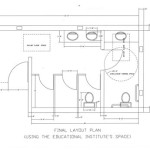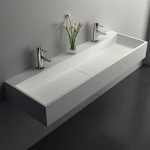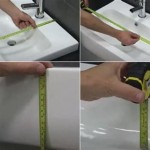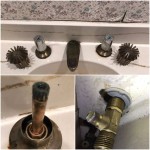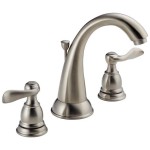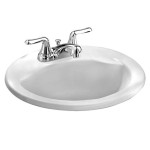Can You Put Normal Plasterboard in a Bathroom? Understanding Bathroom Plasterboard Options
The question of whether standard plasterboard can be used in a bathroom is a common one, often arising during home renovations or new construction projects. The answer, however, is multifaceted and depends on several factors. While standard plasterboard *can* be installed in a bathroom, doing so without understanding the implications and potential risks can lead to significant problems down the line. Bathrooms, by their very nature, are high-humidity environments. The presence of moisture from showers, baths, and even handwashing creates a challenge for building materials, particularly those that are absorbent.
Standard plasterboard, also known as drywall or gypsum board, is primarily composed of a gypsum core encased in paper. This paper facing is its primary vulnerability in damp environments. When exposed to prolonged or excessive moisture, the paper can degrade, leading to swelling, softening, and eventually, mold growth. This deterioration not only compromises the structural integrity of the wall but also creates potential health hazards and aesthetic issues.
Therefore, while the immediate cost savings of using standard plasterboard might seem appealing, the long-term consequences of water damage and the need for eventual repairs or replacement often outweigh the initial financial benefits. A more prudent approach involves carefully evaluating the specific conditions of the bathroom and considering moisture-resistant alternatives specifically designed for such environments.
Understanding the Risks of Using Standard Plasterboard in Bathrooms
The primary risk associated with using standard plasterboard in a bathroom is its susceptibility to moisture damage. This damage manifests in several ways, each posing its own set of problems. The most immediate sign is often the bubbling or peeling of paint or wallpaper. This occurs as moisture penetrates the plasterboard and weakens the adhesive bond between the surface finishing and the wall itself. This is often accompanied by discoloration, typically in the form of water stains that can be difficult to remove.
Beneath the surface, the gypsum core can begin to crumble and lose its structural integrity. This weakens the wall, making it more prone to damage from impact. Over time, this degradation can lead to significant repairs, potentially requiring the complete replacement of the affected plasterboard sections. The process of replacing damaged plasterboard is labor-intensive, disruptive, and can incur considerable expense.
Perhaps the most concerning risk is the potential for mold growth. Mold thrives in damp, dark environments, and porous materials like standard plasterboard provide an ideal breeding ground. Mold not only damages the plasterboard further but also poses significant health risks, particularly for individuals with allergies, asthma, or other respiratory conditions. Mold remediation can be a costly and complex process, often requiring professional intervention.
Furthermore, the presence of moisture can also corrode metal fixtures and fittings within the wall cavity, such as electrical wiring or plumbing. This corrosion can lead to electrical hazards or plumbing leaks, further compounding the problems and increasing the cost of repairs. In summary, using standard plasterboard in a bathroom without proper precautions can create a cascade of problems that extend beyond simple aesthetic concerns, impacting the structural integrity of the building and the health of its occupants.
Alternatives to Standard Plasterboard for Bathrooms
Given the inherent risks associated with using standard plasterboard in bathrooms, several moisture-resistant alternatives offer superior performance and durability. These specialized plasterboards are engineered to withstand the high-humidity conditions prevalent in bathrooms, minimizing the risk of water damage, mold growth, and structural deterioration.
The most common alternative is moisture-resistant plasterboard, often distinguished by its green or blue paper facing. This type of plasterboard is treated with a water-resistant coating that helps to repel moisture and prevent it from penetrating the gypsum core. While not entirely waterproof, moisture-resistant plasterboard provides a significant improvement over standard plasterboard and is suitable for use in most bathroom areas, particularly those away from direct water exposure, such as walls surrounding sinks or toilets. It's important to note that even moisture-resistant plasterboard requires proper sealing of joints and edges to prevent moisture ingress.
Another option is cement board, a more robust and water-resistant material commonly used in areas subject to direct water exposure, such as shower and tub surrounds. Cement board is made from a mixture of cement and reinforcing fibers, making it highly resistant to water damage and mold growth. It is also significantly stronger than standard or moisture-resistant plasterboard, providing a more stable and durable substrate for tiles and other finishes. However, cement board is heavier and more difficult to cut and install than plasterboard, requiring specialized tools and techniques.
For particularly vulnerable areas, such as shower niches or steam rooms, waterproof membranes can be applied over the plasterboard to create an impermeable barrier against moisture. These membranes are typically made from a flexible, waterproof material that is applied to the wall surface before tiling or other finishes are installed. Several types of waterproof membranes are available, including liquid-applied membranes and sheet membranes. Each offers a different level of protection and ease of installation.
When choosing a plasterboard alternative for a bathroom, it is crucial to consider the specific requirements of the installation, including the level of moisture exposure, the type of finish being applied, and the structural demands of the wall. Consulting with a building professional is recommended to ensure that the appropriate material is selected and installed correctly.
Best Practices for Installing Plasterboard in Bathrooms
Even with the use of moisture-resistant plasterboard, proper installation techniques are essential to maximize its performance and prevent water damage. Several key practices should be followed to ensure a durable and long-lasting installation.
Firstly, all joints and edges of the plasterboard should be properly sealed with a waterproof joint compound. This prevents moisture from penetrating the gypsum core through the gaps between the boards. The joint compound should be applied in multiple thin layers, allowing each layer to dry completely before applying the next. A fiberglass mesh tape should be embedded in the first layer of joint compound to provide added strength and prevent cracking. Corner beads should also be installed at external corners to protect them from damage and provide a clean, finished edge.
Secondly, all penetrations through the plasterboard, such as for pipes or electrical wiring, must be carefully sealed with a waterproof sealant. This prevents moisture from entering the wall cavity through these openings. The sealant should be applied generously around the perimeter of the penetration, ensuring a tight and watertight seal. It's often beneficial to use expanding foam as a backing material to support the sealant and provide added insulation.
Thirdly, adequate ventilation is crucial for maintaining a dry and healthy bathroom environment. An exhaust fan should be installed to remove moisture-laden air during and after showers and baths. The exhaust fan should be properly sized for the size of the bathroom and vented to the outside to prevent moisture from accumulating within the building. Regular cleaning and maintenance of the exhaust fan are essential to ensure its continued effectiveness.
Finally, surfaces should be properly prepared before applying paint or wallpaper. Priming the plasterboard with a moisture-resistant primer helps to seal the surface and improve the adhesion of the finish coat. Using a high-quality bathroom paint that is specifically formulated to resist moisture and mold growth is also recommended. These paints typically contain antimicrobial additives that inhibit the growth of mold and mildew. Regular cleaning of bathroom surfaces with a mild detergent can also help to prevent the buildup of mold and mildew. By following these best practices, the lifespan of plasterboard in a bathroom can be significantly extended, minimizing the need for costly repairs and replacements.

Can You Use Normal Plasterboards In A Bathroom The Diy Fix

How To Install Moisture Resistant Plasterboard In The Bathroom

Plaster Damp And Damaged Behind Tiles In Shower Tiling Forum Advice Tilers

Bathroom Plasterboard Building Materials Mick George

3 Golden Reasons Why Is Worth To Use Moisture Resistant Plasterboard Infographic

Acoustic Plasterboard Vs Normal What S Better Easy Home Soundproofing

What Plasterboard Can I Use In A Bathroom Plaster S

Shower Bath Tiling Preparation Plaster And Wooden Windowsill Forum Advice Tilers
Can I Use Standard Plasterboard In Bathroom By Basin Diynot Forums

Acoustic Plasterboard Vs Normal For Noise Reduction
Related Posts

